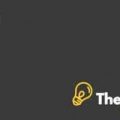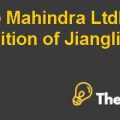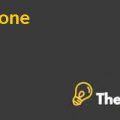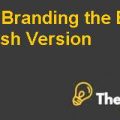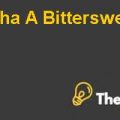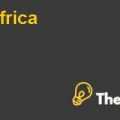QUESTION 1
Exhibit 4 provides an explanation of the statistics used in portfolio performance. Use this table and data provided in the case and critically evaluate the return and risk characteristics of the ProIndex Fund over the previous five years. Assume that the risk free rate is 2%.
There is a range of portfolio performance measures, which are provided in exhibit 4 including standard deviation, expected returns, Sharpe ratio, Treynor measure, Jenson’s alpha, tracking error etc. These portfolio measures and characteristics have been calculated for the previous 4 years for the Pro Index Fund. The daily stock prices for a period of 5 years for this fund are presented in exhibit 1. Along with this, the daily stock prices of the previous 5 years for the S&P 500 index are also provided in exhibit 1. The Pro Index fund is listed on this stock exchange. Therefore, all the portfolio characteristics, measures and its performance have been calculated in comparison to the characteristics of the market as a whole.
First of all, in order to simplify the calculations, the daily returns over the period of past 5 years have been calculated for the ProIndex Fund and the market. The difference between the previous days’ price and the current day price has been divided by the previous day price to calculate the return. The average of 5 year daily return has then been calculated, which is around 0.13% for the ProIndex Fund as compared to the S&P 500 index’s 0.06%. This return is almost double of the market return. From this average daily return, the average annualized return has been calculated over a trading period of 252 days.
The daily standard deviation of the fund and its annualized standard deviation have already been calculated in exhibit 2. The annualized standard deviation for the ProIndex Fund is 30.32% as compared to 19.47% standard deviation for the S&P 500 fund. This shows that the returns of the fund are more volatile as compared to the returns of the market. This also shows the risk principle of high risk and high return. Then the correlation between the returns of the fund and the returns of the market has been calculated which is around 65%. This could be considered as a strong correlation with the market. This positive and strong correlation shows that there is high probability that the returns of this fund would be significantly dependent upon the returns of the market. This is a positive sign of the favorable performance of this fund.
The slope formula has been used in order to calculate the beta for the fund. The beta has been calculated to be 1.01, which is higher than 1 which is the beta for the market. This shows that investment in this fund would be risky. In other words it could also be interpreted as that if the returns of the market decreased, then the returns of the fund would decrease by 1.01 times. Risk averse investors are not likely to invest in this fund.
The Sharpe ratio is the risk premium per unit of the risk taken. This is 47% and it is impressive for a fund of this type. Similarly, the Treynor measure provides the risk premium per unit of risk which is measured by beta. This ratio is 14% which is low because of the high beta of the fund. The Jensen’s Alpha is the measure of the return of the portfolio as compared to the volatility of the returns. This ratio calculates the excess return created by the portfolio over the expected or the required return of the portfolio.
The tracking error calculates the excess return of the portfolio in comparison to the benchmark return or the return over the index. This ratio in annualized percentage terms is 8.15% for the Pro Index Fund. Finally, the information ratio has been calculated, which shows the excess return generated by the fund per unit of the risk. This has been calculated to be 1 for the Pro Index Fund, which shows that the performance of the Pro Index Fund is exceptional. Overall, all the portfolio measures show that investing in this portfolio is risky, but it generates good returns as compared to the returns generated by the market.
QUESTION 2
As in (1), critically evaluate the return and risk characteristics of the ProValue Fund over the previous year. Assume that the risk free rate is 2%.
The Pro Value Fund comprises of 9 mid cap stocks. This fund was initiated in the year 2012 and at the time of the initiation, this fund had only 4 mid cap stocks worth $ 1999244 of the total investment. Currently, two new stocks are also likely to be added to the fund. These two new mid cap stocks are the CNO Financial Group and the Atmos Energy...............
Thompson Asset Management Case Solution
This is just a sample partial case solution. Please place the order on the website to order your own originally done case solution.


